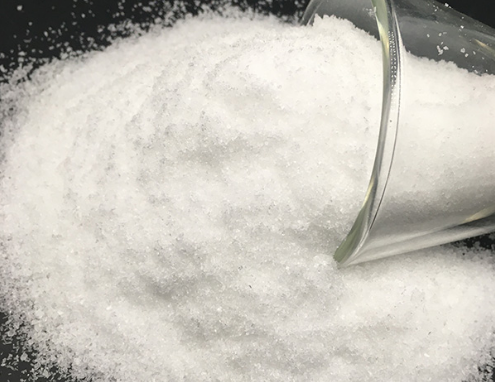Trace Elements for Plants: Understanding Their Significance in Plant Growth
In the realm of plant biology, the significance of trace elements cannot be overstated. These micronutrients, albeit required in minute quantities, play an indispensable role in the growth, development, and overall health of plants. Their absence or deficiency can lead to a myriad of issues, hindering optimal growth and impacting crop yield. In this comprehensive guide, we delve into the world of trace elements, exploring their types, functions, sources, and the critical role they play in ensuring robust plant growth.
Understanding Trace Elements
What are Trace Elements?
Trace elements, also referred to as micronutrients, are essential chemical elements that are indispensable for plants' growth and development. Unlike macronutrients such as nitrogen, phosphorus, and potassium, which plants require in larger quantities, trace elements are needed in minute amounts, often measured in parts per million (ppm). These elements are vital catalysts for various biochemical reactions within plants, influencing processes such as photosynthesis, enzyme activation, and nutrient absorption.
Types of Trace Elements
There are several trace elements that plants require for their proper growth and functioning. These include but are not limited to:
1. Iron (Fe): Essential for chlorophyll synthesis, aiding in photosynthesis and overall plant vigor.
2. Zinc (Zn): Crucial for enzyme activation and regulating growth hormone levels within plants.
3. Copper (Cu): Facilitates electron transfer in various metabolic reactions, contributing to plant resilience.
4. Manganese (Mn): Vital for photosynthesis and nitrogen metabolism, ensuring optimal plant growth.
5. Molybdenum (Mo): Necessary for nitrogen fixation and enzyme activity in plants.
6. Boron (B): Aids in cell wall formation, pollination, and seed development, playing a pivotal role in reproductive growth.
7. Chlorine (Cl): Assists in osmosis and photosynthesis, contributing to proper water balance in plants.
8. Nickel (Ni): Essential for nitrogen metabolism and certain enzyme functions in plants.
Zinc Sulphate Monohydrate Powder
Functions of Trace Elements in Plants
Each trace element has distinct functions vital for the overall health and growth of plants. For instance:
- Iron (Fe): It is a core component of chlorophyll, the pigment essential for photosynthesis. Iron deficiency leads to chlorosis, where leaves turn yellow due to the inability to produce chlorophyll.
- Zinc (Zn): Acts as an enzyme cofactor involved in numerous metabolic processes, including auxin synthesis and protein production.
- Copper (Cu): Supports electron transfer in redox reactions and plays a role in lignin synthesis, aiding in plant structural integrity.
- Manganese (Mn): Participates in photosynthesis, enzyme activation, and nitrogen metabolism, essential for healthy plant growth.
Related articles:Unlocking Valuable Insights: Key Questions to Ask When Ordering Hydroxypropyl Methyl Cellulose in Vietnam
Can Silica Fume Enhance the Magic of Ceramics?
FAQs | Everything You Need to Know About Formic Acid
Top HPMC For ETICS/EIFS Exporter Insights 2024
Key Considerations When Choosing HPMC for ETICS/EIFS Exporter
Top 5 Pure Hydroxypropyl Methylcellulose Powder Brands Revealed
The Benefits of Using Organic Turmeric Extract Supplements
- Molybdenum (Mo): Enables plants to utilize nitrogen efficiently by aiding in nitrogen fixation.
- Boron (B): Contributes to cell wall formation, pollen germination, and seed production, essential for reproductive growth.
- Chlorine (Cl): Regulates stomatal activity, aiding in photosynthesis and maintaining proper water balance in plants.
- Nickel (Ni): Plays a role in nitrogen metabolism, ensuring proper utilization of this vital nutrient by plants.
Sources of Trace Elements for Plants
Trace elements can be sourced from various inputs:
- Soil: Many trace elements are naturally present in the soil. However, their availability to plants can vary depending on soil pH, texture, and organic matter content.
- Fertilizers: Some fertilizers contain trace elements, either naturally or as additives, to ensure plants receive a balanced supply of micronutrients.
- Organic Matter: Composts and organic amendments can be rich sources of trace elements, contributing to their availability in the soil.
Impact of Trace Element Deficiency or Imbalance
Deficiency or imbalance of trace elements can significantly impact plant health:
- Chlorosis: Yellowing of leaves due to lack of chlorophyll (common in iron deficiency).
- Stunted Growth: Insufficient zinc or manganese can lead to reduced plant growth and development.
- Poor Reproductive Growth: Boron deficiency can hinder proper seed development and pollination.
Conclusion
Understanding the role and significance of trace elements in plant growth is pivotal for optimizing crop yield and ensuring healthy vegetation. These micronutrients, despite being required in small quantities, are indispensable for various biochemical processes crucial for plants' vitality and resilience.
In conclusion, incorporating a balanced supply of trace elements through appropriate soil management, fertilization, and organic inputs is imperative for fostering optimal plant growth and mitigating the risks associated with deficiency or imbalance of these micronutrients.
Choosing the Right Artificial Turf Backing: Key Factors Explained
Understanding Raw Materials in Dipped Work Gloves
Bulk Buy CAS 110-63-4: Save Big Now!
Mastering RDP: Your Ultimate Guide to Gypsum Plaster Solutions
PMK Ethyl Glycidate Australia: Bulk Order vs Local Sourcing
MHEC Chemical Makers: Innovations and Industry Trends
Unlock Peak Performance: Master Intermittent Hypoxic Training












